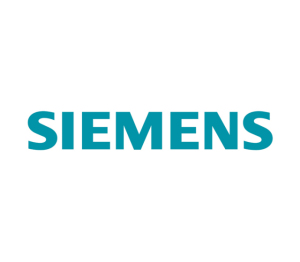Siemens Gains U.S. Contract for Combat Ultrasound
by Barbara Kram, Editor | October 01, 2008

Siemens Healthcare
Malvern, PA - Following a competitive initial development process, Siemens Healthcare (www.siemens.com/healthcare) has entered into an exclusive government contract with the Defense Advance Research Projects Agency (DARPA) to develop a prototype Deep Bleeder Acoustic Coagulation cuff (DBAC)*, a life-saving ultrasound device limiting blood loss and shock resulting from combat limb injuries. Partners at the University of Washington's Center for Industrial and Medical Ultrasound (UW), the Texas A&M University's Institute for Preclinical Studies (TIPS) and Siemens Corporate Research (SCR) will work together with Siemens Healthcare to achieve DARPA's goal of producing a prototype in 18 months.
"We are very pleased that DARPA has recognized the expertise of the Siemens team to deliver on this ambitious vision", notes Dr. Frank Sauer, Department Head of Imaging and Visualization at SCR. "The development of this groundbreaking ultrasound technology will allow military personnel to begin treating blood loss injuries right at the front lines, potentially saving lives."
The cuff is designed to limit blood loss from penetrating wounds to limbs in fast and slow bleeders, significantly reducing the risk of limb loss and death resulting from irreversible hemorrhagic shock. Once applied to the limb, Siemens Silicon Ultrasound technology within the cuff automatically detects the location and severity of the bleeding within the limb. This triggers therapeutic ultrasound elements within the cuff to emit and focus high-power energy toward the bleeding sites, speeding coagulation and halting bleeding at the injury site. The device is intended for use by minimally-trained operators, curtailing bleeding in a minimal amount of time with automatic treatment and power shut-off.

 "We are very excited to leverage advanced technologies of Siemens Ultrasound such as real-time volumetric imaging and Silicon transducers* to realize DARPA's vision for saving lives on the battlefield," said Richard Chiao, VP of Siemens Healthcare's Ultrasound Innovation Group. "We believe technologies developed for this new therapeutic application of ultrasound will also benefit civilian care in the future."
"We are very excited to leverage advanced technologies of Siemens Ultrasound such as real-time volumetric imaging and Silicon transducers* to realize DARPA's vision for saving lives on the battlefield," said Richard Chiao, VP of Siemens Healthcare's Ultrasound Innovation Group. "We believe technologies developed for this new therapeutic application of ultrasound will also benefit civilian care in the future."
Aside from its use of advanced medical technologies, the cuff's use in the field requires a compact, lightweight design with highly integrated electronics. Built with versatility in mind, the cuff is capable of accommodating a variety of limbs ranging from the wide male thigh to the slender female arm.
"We are very pleased that DARPA has recognized the expertise of the Siemens team to deliver on this ambitious vision", notes Dr. Frank Sauer, Department Head of Imaging and Visualization at SCR. "The development of this groundbreaking ultrasound technology will allow military personnel to begin treating blood loss injuries right at the front lines, potentially saving lives."
The cuff is designed to limit blood loss from penetrating wounds to limbs in fast and slow bleeders, significantly reducing the risk of limb loss and death resulting from irreversible hemorrhagic shock. Once applied to the limb, Siemens Silicon Ultrasound technology within the cuff automatically detects the location and severity of the bleeding within the limb. This triggers therapeutic ultrasound elements within the cuff to emit and focus high-power energy toward the bleeding sites, speeding coagulation and halting bleeding at the injury site. The device is intended for use by minimally-trained operators, curtailing bleeding in a minimal amount of time with automatic treatment and power shut-off.
We repair MRI Coils, RF amplifiers, Gradient Amplifiers and Injectors.
MIT labs, experts in Multi-Vendor component level repair of: MRI Coils, RF amplifiers, Gradient Amplifiers Contrast Media Injectors. System repairs, sub-assembly repairs, component level repairs, refurbish/calibrate. info@mitlabsusa.com/+1 (305) 470-8013

Aside from its use of advanced medical technologies, the cuff's use in the field requires a compact, lightweight design with highly integrated electronics. Built with versatility in mind, the cuff is capable of accommodating a variety of limbs ranging from the wide male thigh to the slender female arm.
1(current)










